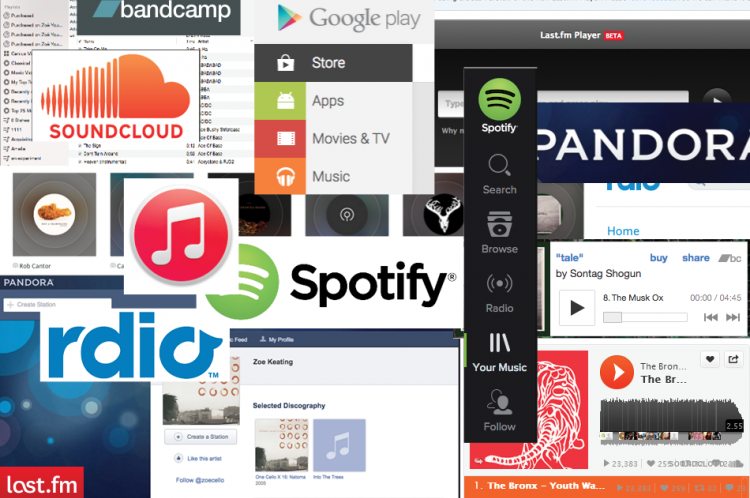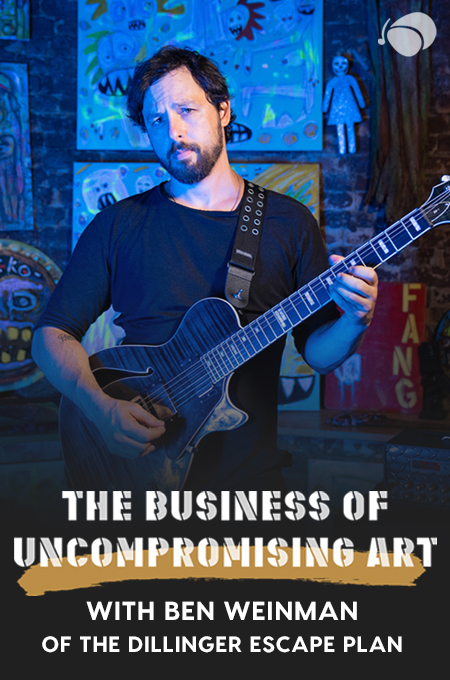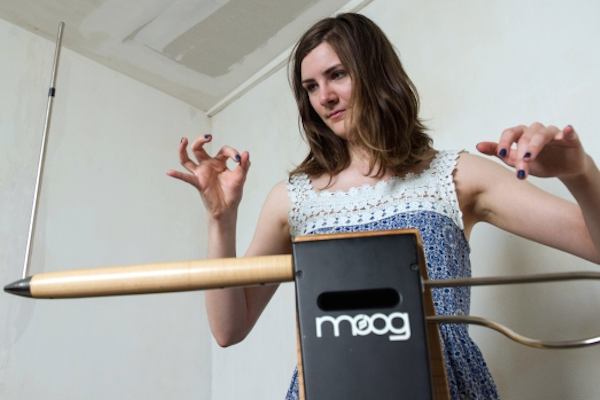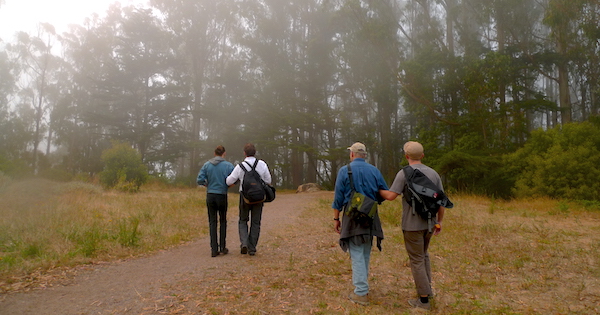You’re a nice person. You love music. You’ve never stolen anything before in your life.
Yet somehow, if you’re anything like me, it seems like you can’t listen to music today without falling into a giant moral quagmire. Am I supporting the artists enough? Which service should I use to listen to this new track? How much money should I set aside a month to buy music? If I do spend money, will the artist ever see any of it anyway? Am I stealing?
All you wanted to do was hear some music. Instead, you’ve been cast into a wilderness of emotional ambiguity, doubt, confusion, and self-loathing.
We set out to explore this question in a little more detail. As a good person who wants to support artists while also accessing the variety of music to which we’ve become accustomed, how should you approach listening to music?
My Assumption: Musicians Want You to Listen to Their Music
Some might say the answer to this question is easy: buy the music, dummy! If you can’t afford it, you don’t have the right to listen to it. That’s the marketplace. You’re a thief.
But as an independent musician myself, if the choice is between someone listening to my music for free or not listening at all, I would MUCH rather they just listened to my music, even if I don’t get a dime. I mean, I poured my heart and soul into creating it so that you could listen to it. Fulfill it’s highest purpose.
Plus, streaming music is so damn convenient for listeners.
If you’ve ever explored this topic before, you’ve probably read some of Zoë Keating’s amazing writing on the subject. She took the previously unheard of step of publicly releasing her earnings from various digital sources (which The Guardian helpfully digested for us). I love her in part because she seems to share our philosophy that she wants people to listen to her music first and foremost, so she doesn’t villainize streaming. But then also, you know, it’d be great if listeners were moved to help her continue to making a living by purchasing music and merchandise and buying tickets to her shows.
The Options: Sales vs Streaming
You basically have two choices today for listening to the music you want to hear: buy the song or stream it.
The short answer is that buying music is almost always better for an artist than streaming it. It’s just that simple. That’s not to say streaming services are bad, but the payouts to the artists are really pretty minimal, especially to smaller labels and indie artists. Bigger artists on major labels (think Taylor Swift), can pull their music from streaming services and demand audiences buy their albums, but for artists wanting to be discovered, pulling music off of streaming services is a recipe for lifelong obscurity.
Spotify likes to make a lot of noise about paying out $2 billion in royalties, but the truth is that an artist would need between 60,000 and 100,000 streams a month (at $0.007 a stream) to live just above the poverty line (at $500/month). And for up-and-coming artists, 100,000 streams a month is a tall order. As others have pointed out, a lot of that $2 billion has gone to major record labels’ archives, instead of new artists, so it’s a bit of a red herring.
For the majority of musicians, streaming is not going to cut it.
So let’s table streaming for a minute—for the vast majority of musicians who want to make a living off their art, streaming is not gonna cut it. You need people to buy your music, or at least go to your concerts and buy your t-shirts and collectable sweatbands, which are all viable options. Streaming is more of a promotion, so a larger demographic of people can listen to your music and then the truly addicted can buy your stuff.
It’s important that we all know that.
The Best Ways to Buy Music
Now, when buying music as a listener, you have a few options, and it seems to me there’s a very clear step-by-step order of preference, in terms of the musician’s benefit.
Step 1: Go to the Artist’s Website.
A lot of independent artists now allow you to buy their music directly through their website. This is guaranteed to be the best option for the musician because they would not have it on their website if it’s not what they wanted you to do.
Ever since Radiohead released their album In Rainbows at a rate of “pay what you can”, more and more artists have been following their lead, which can be a great way for you to get the music and throw the artist a tip based on your personal finances. Talib Kweli’s been doing that recently to great success, as well. Odds are, even a small token of your appreciation is far more than they’d make through streaming or by partnering with a major label.
Step 2: Bandcamp.
Bandcamp is one of the great tools for independent musicians today. It allows the musicians to set the terms and the price, as long as they own the material. Bandcamp takes a 10% fee and the artist makes the rest. The Bandcamp deal isn’t quite as good for artists on a label—Bandcamp still take the 10% fee, and the rest is split between artist and label according to their contract–but it’s likely still a better option than many other avenues. Stores like iTunes and GooglePlay can take anywhere from 25-35% commission. Loudr.com is similar to Bandcamp but specifically focused on artists recording cover songs.
Step 3: Buy off iTunes.
It’s funny that iTunes was seen as the enemy a decade ago, and it’s now seen as the savior for many musicians. Once again, Zoë Keating’s earnings sheet here is the proof of how iTunes sales make big difference for many artists. Another upside to iTunes is in it’s promotional value. Streams, sales, and page visits on iTunes are all entered into its algorithm, increasing an album’s visibility within the iTunes store. And despite declining iTunes downloads in recent years, it’s still one of the highest visibility music services on mobile platforms.
There’s one other option that I should mention — supporting a musician via Kickstarter or Patreon. These services are different than “buying” the music, but allow you to contribute to the artist and directly support his or her next creation, often in advance. We all know about Kickstarter by now, but Patreon is a cool service that allows you support artists in an ongoing manner, helping them continue to create the music you love.
The Ways to Stream Music
This one is highly debatable. The “per-play” payout numbers for a company like Spotify are different all the time—it really fluctuates. But there are a couple things that remain the same.
The one category of music services we can categorically advise against are those that pay no royalties to artists. Torrenting sites like Pirate Bay do not financially support artists. As of publication, Grooveshark has yet to show any meaningful signs of paying artists royalties, though an ongoing series of lawsuits may force their hand before too long. Soundcloud is an interesting case—they don’t pay out royalties, but they do serve as a platform for licensing agreements and social promotion.
Streaming is far more about the number of listens than financial reward.
For many independent and new artists, streaming is far more about the number of views or listens than financial reward. As a musician, you want to get those numbers up so that you’ll have credibility with labels, promoters, and bookers. As a listener, the best place to start might once again be to visit the artist’s website and see whether they are pushing or promoting any specific tracks. That way, you can help them get their views up.
An independent label called Trichordist published this finding for its catalogue of 1500 songs between 2012 and 2014.

As you can see, the most-used services rank near the bottom, especially Spotify. Personally, I don’t have a Nokia phone, though now I kind of want one, and I’ve never really used Google Play or Deezer but I’m going to take another look at them now. Rdio’s beautiful so I have no problem shifting over there if they payout a little better than some of the others. Also, Napster still exists?
The biggest thing I noticed from Zoë Keating’s reported earnings is that among streaming services that pay artists, YouTube is the worst. Zoë gets an average of $0.0041 a play from Spotify, compared to $0.00064 a play from YouTube.
Internet Radio services like Pandora and Last.fm—sites where you cannot select the next song that plays—are wonderful to use as a discovery tool, but do little to support artists. Zoë Keating and other research points to roughly $0.001 per play on Pandora, and that number doesn’t move up even when the listener is specifically tuned to the “Zoë Keating Station”. Use Internet radio to find new artists, but once you know what you like, stream or buy it.
I pay for Spotify Premium, which is roughly $10 a month. Spotify’s company page explains how as more people use the service, they hope to increase the overall pot and pay out more. I quite like Spotify for its convenience, so I hope their vision pans out. And I’m excited to see what happens with Apple’s new Beats Streaming Service, which purports to pay artists far more.
My Recommendation: Stream to Buy and then Stream Again
Where does all that leave us?
To me, the answer is pretty obvious. You are going to listen to a lot more music than you’re going to buy, unless you have wads of cash lying around and want to spend it all on music (yes, please!). What I end up doing is listening to a ton of music, usually on Spotify or Rdio but also through artists’ websites and Bandcamp. If there’s something I really like, especially from an up-and-coming indie artist, I’ll absolutely fork out a few bucks for it, especially via Bandcamp. Buying concert tickets and merch is another fantastic way to support the artists whose music you stream. But paying the occasional $10 for an album that I’ve been enjoying feverishly online doesn’t seem like too much of a stretch now and again. It’s less than two drinks out at a bar in NYC.
After I’ve bought an artist’s album, I usually go back to streaming it.
After I’ve bought an artist’s album, I usually go back to streaming it again online because at that point every additional listen costs me nothing but earns a fraction of a cent for the artist. It’s not going to make them millions, but hey, why not? I might as well contribute. Add their songs to a playlist. Share it with a friend! Streaming services are increasingly social which means you can help the artist find new fans.
Anyway, I hope that this exploration has helped you navigate the world of music listening a little bit from an artist’s perspective. Most of all, I’m really curious to see where this all goes in the coming years.
If you have anything to add from either an artist’s or listener’s perspective, leave us a note in the comments! We’d love to hear from you!




